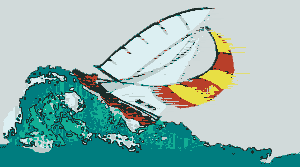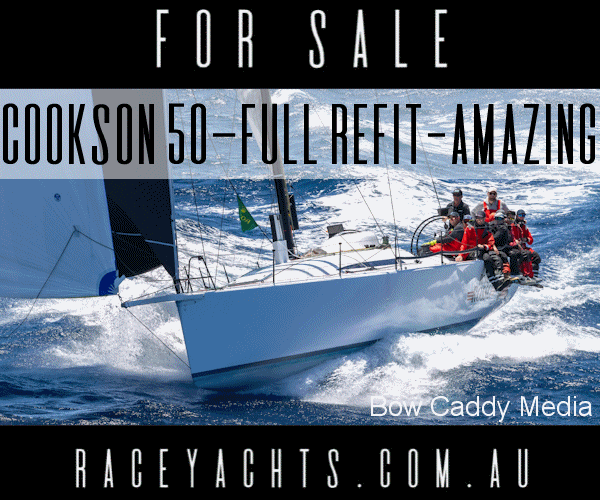Beaufort Scale - wind and sea conditions
by Nancy Knudsen on 12 Apr 2010

There we were... SW
'..so there we were in a Force 8..'
'A what?'
'..a Force 8, and the winch jammed...'
'
What's a Force 8 mate?'
'It's a bloody big wind - where do you come from?'
'Australia.'
'I see old chap - that explains it. Now can I get on with my story?'
The Beaufort scale has long been a bit of a mystery to those who don't have occasion use it very often, and, as many forecasts from certain parts of the world are given using the Beaufort Scale, if you're not familiar with it, it's a good idea to have the translation pasted up above the chart table.
The scale was created in 1805 by, surprise surprise, Sir Francis Beaufort, an Irishman who became a British admiral.
He created the scale to attempt to standardise the descriptions that naval officers made to each other, and eliminate subjectivity. This was so successful that by the 1830's the standard was accepted throughout the Royal Navy.
The Beaufort Scale describes in a visual way the Sea State and relates that back to wind speed.
Usually, this works (not always) the sea state can be associated with certain wind strengths. It is most accurate in an open ocean, and particularly when the sea is well developed by the present wind, so the Beaufort scale numbers are traditionally associated with a certain range of wind speed.
However, a rapid wind change or an area of little fetch, will naturally not provide an alignment between the visual sea state and the wind strength.
Here's a brief summary of the scale, with accompanying wind speed:
| Beaufort number |
Description |
|
Wave height |
Sea conditions |
|
|
Knots |
Metres |
Feet |
|
| 0 |
Calm |
< 1 |
0 |
0 |
Flat. |
| 1 |
Light air |
1 – 2 |
0 – 0.2 |
0 – 1 |
Ripples without crests. |
| 2 |
Light breeze |
3 – 6 |
0.2 – 0.5 |
1 – 2 |
Small wavelets. Crests of glassy appearance, not breaking |
| 3 |
Gentle breeze |
7 – 10 |
0.5 – 1 |
2 – 3.5 |
Large wavelets. Crests begin to break; scattered whitecaps |
| 4 |
Moderate breeze |
11 – 15 |
1 – 2 |
3.5 – 6 |
Small waves with breaking crests. Fairly frequent white horses. |
| 5 |
Fresh breeze |
16 – 20 |
2 – 3 |
6 – 9 |
Moderate waves of some length. Many white horses. Small amounts of spray. |
| 6 |
Strong breeze |
21 – 26 |
3 – 4 |
9 – 13 |
Long waves begin to form. White foam crests are very frequent. Some airborne spray is present. |
| 7 |
High wind, Moderate gale, Near gale |
27 – 33 |
4 – 5.5 |
13 – 19 |
Sea heaps up. Some foam from breaking waves is blown into streaks along wind direction. Moderate amounts of airborne spray. |
| 8 |
Gale, Fresh gale |
34 – 40 |
5.5 – 7.5 |
18 – 25 |
Moderately high waves with breaking crests forming spindrift. Well-marked streaks of foam are blown along wind direction. Considerable airborne spray. |
| 9 |
Strong gale |
41 – 47 |
7 – 10 |
23 – 32 |
High waves whose crests sometimes roll over. Dense foam is blown along wind direction. Large amounts of airborne spray may begin to reduce visibility. |
| 10 |
Storm, Whole gale |
48 – 55 |
9 – 12.5 |
29 – 41 |
Very high waves with overhanging crests. Large patches of foam from wave crests give the sea a white appearance. Considerable tumbling of waves with heavy impact. Large amounts of airborne spray reduce visibility. |
| 11 |
Violent storm |
56 – 63 |
11.5 – 16 |
37 – 52 |
Exceptionally high waves. Very large patches of foam, driven before the wind, cover much of the sea surface. Very large amounts of airborne spray severely reduce visibility. |
| 12 |
Hurricane |
= 64 |
= 14 |
= 46 |
Huge waves. Sea is completely white with foam and spray. Air is filled with driving spray, greatly reducing visibility. |
If you want to link to this article then please use this URL: www.sail-world.com/68433

